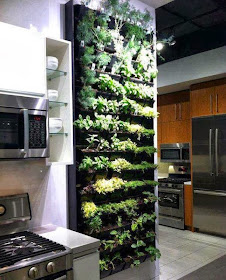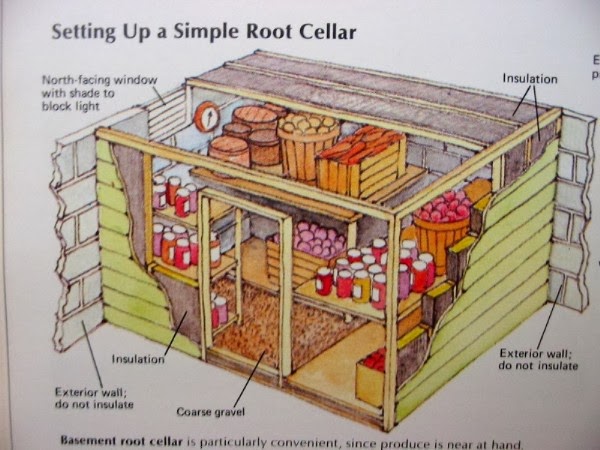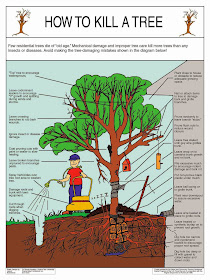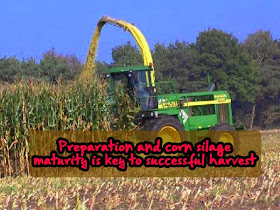It is hard to believe, but corn silage harvest will start soon on many dairy farms.
Please review the following information as you prepare for the upcoming harvest. At this time in the growing cycle, the most important manageable factor that will influence the nutritional value of this year’s corn silage is maturity at chopping.
Harvesting corn silage too early (i.e., silage with less than about 30 percent dry matter) usually results in a lower starch concentration in the silage, which means more corn grain may need to be supplemented.
Least expensive
Corn silage is usually among the least expensive ingredients in a diet and high inclusion rates will reduce feed costs.
However, because wet silage can reduce feed intake by dairy cows, dietary inclusions rates for wet silage are usually less than for normal silage which can increase overall feed costs.
Overmature corn silage (silage with more than about 38 percent dry matter) also has less nutritional value than normal corn silage because of lower fiber and starch digestibility.
Kernel processing partially reduces some of the negative effects of maturity on starch digestibility and is strongly recommended for mature corn silage, but it will not make mature corn silage equal to corn silage harvested at the optimal dry matter concentration (30 to 38 percent dry matter).
A portion of the crop that is harvested will be lost during fermentation and storage. That loss is considered shrink.
Factors that affect shrink include:
Type of silo structure: (bags and sealed silos usually lowest, conventional upright silos intermediate and bunkers usually have greatest shrink).
Moisture concentration at filling. Wet silage can have high shrink because of excessive fermentation and seepage. Dry silage can have high shrink because of spoilage (for example, mold) during storage and feed out.
• Chop length
Chopping too coarsely increases the amount of air trapped in the silage mass and reduces compaction. Chop just coarse enough to provide enough ‘chewable matter’ for the cows. Approximately 5 percent of the material on the top screen of the Penn State shaker box is usually adequate.
• Rate of filling
Slow filling reduces the rate of fermentation so that pH stays high for a longer period of time which increases shrink. The faster you fill and pack (filling faster than you can pack will increase shrink), the less shrink.
• Air trapped in the silage mass and air infiltration into the mass promotes yeast and mold growth causing shrink. Pack, pack, pack, and when you think you have packed enough, pack some more.
• Not covering the silage in a bunker silo greatly increases shrink. Several studies have shown that covering a bunker with plastic returns around $8 in savings for every $1 invested in plastic and labor needed to cover the silo. For maximum benefit, cover quickly after the silo is filled.
•Silage inoculants
Silage inoculants can increase, decrease, or not affect shrink (how is that for a useful statement). The standard silage inoculant (lactic acid bacteria) usually reduces fermentation losses slightly (i.e., reduces shrink) but often slightly increase spoilage losses during feeding.
Spoiling
If spoiling during feed-out has been a problem on a specific farm, then use of lactic acid bacteria may increase overall shrink and would not be recommended.
If spoilage has not been a problem on a specific farm, then use of lactic acid bacteria should be considered because of the reduction in fermentation losses.
If spoilage has been a problem, propionic acid bacteria (Lactobacillus buchneri) is recommended. This inoculant often increases fermentation losses but usually reduces spoilage losses more.
Shrink
Minimize shrink by chopping fine enough (but not too fine), filling rapidly, packing well and sealing the silo with plastic. Lactic acid bacterial inoculants will reduce shrink a bit if spoilage during feedout is not a problem. Lactobacillus buchneri inoculant will reduce spoilage during storage and feedout but will increase fermentation losses slightly.
Maximize nutritional value of corn silage by chopping when corn is between 30 and 38 percent dry matter.
(This was published originally in the August 2009 issue of Buckeye Dairy News and was written by Dr. Bill Weiss, OSU Extension Specialist, Dairy Nutrition and Forages).

















